Find Help
More Items From Ergsy search
-
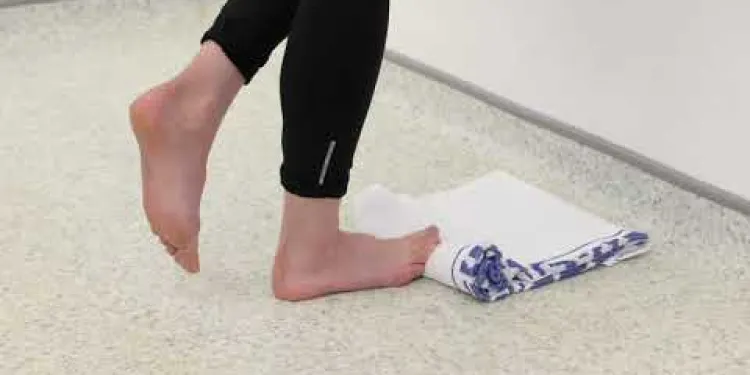
Plantar Fascia Loading Exercise (High Load Exercise)
Relevance: 100%
-
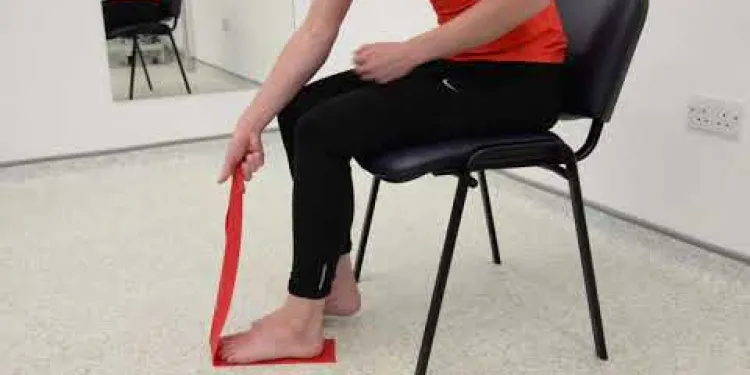
Plantar Fascia Intrinsic Theraband Strengthening Exercise
Relevance: 46%
-
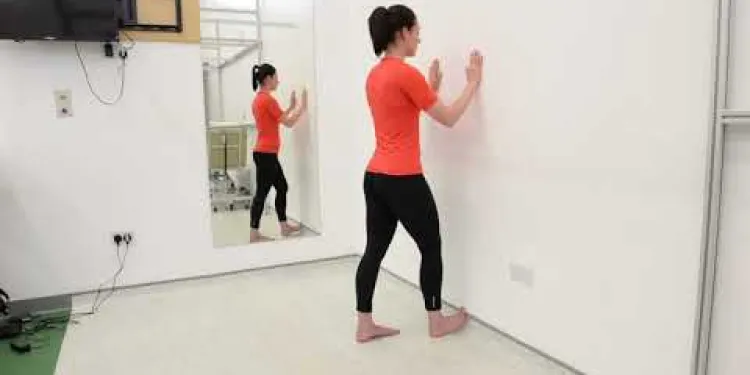
Plantar Fascia Wall Stretch
Relevance: 45%
-
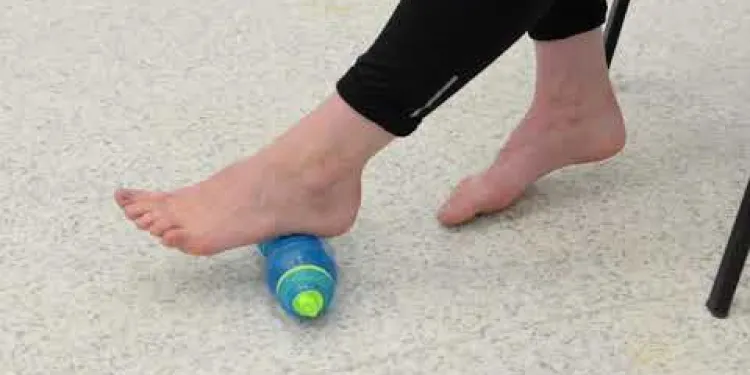
Plantar Fascia Cold Therapy
Relevance: 42%
-

Eccentric loading forearm extensors (for tennis elbow)
Relevance: 42%
-

What does an undetectable viral load mean?
Relevance: 38%
-
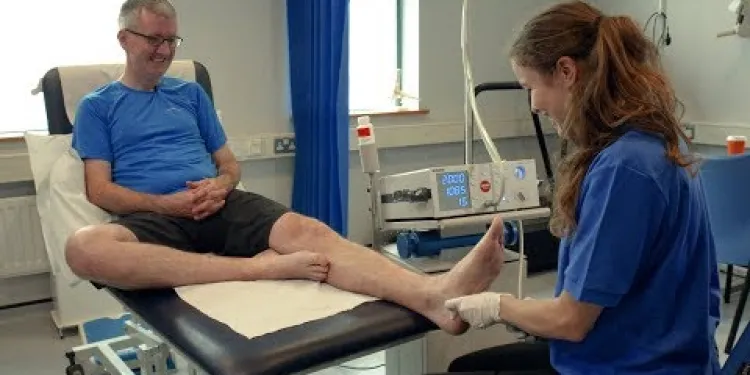
Plantar fasciitis
Relevance: 34%
-

Plantar fasciitis
Relevance: 34%
-

Is it safe for a partner of someone with HIV to have children?
Relevance: 17%
-

Heel pain | NHS
Relevance: 16%
-
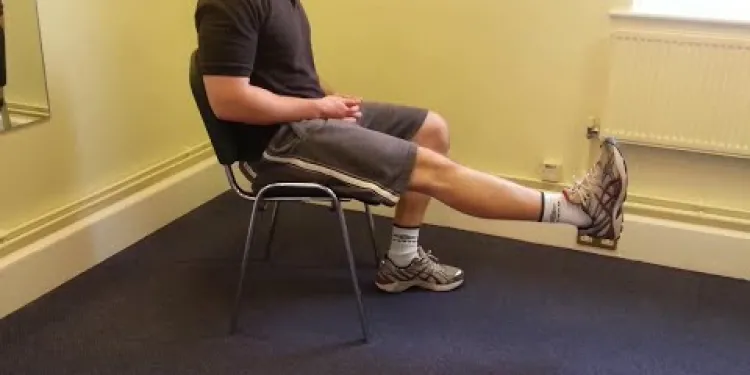
Knee Care Exercises
Relevance: 13%
-

What is HIV?
Relevance: 13%
-

Can high blood pressure be prevented?
Relevance: 13%
-

What is antiretroviral therapy (ART)?
Relevance: 13%
-

What is the difference between HIV and AIDS?
Relevance: 12%
-

Shoulder Exercises 1
Relevance: 12%
-

Can exercise influence cortisol levels?
Relevance: 12%
-

How can high blood pressure be treated?
Relevance: 12%
-

Neck Exercises
Relevance: 12%
-

Neck Exercises
Relevance: 11%
-

What is high blood pressure?
Relevance: 11%
-

Are there any exercises to avoid during pregnancy?
Relevance: 11%
-

Exercise Routines for Busy Parents
Relevance: 11%
-

Should I adjust my exercise routine during a heatwave?
Relevance: 11%
-

Can exercise help prevent gestational diabetes?
Relevance: 11%
-

Is it safe to exercise with a cold?
Relevance: 11%
-

Facial exercise programme
Relevance: 11%
-
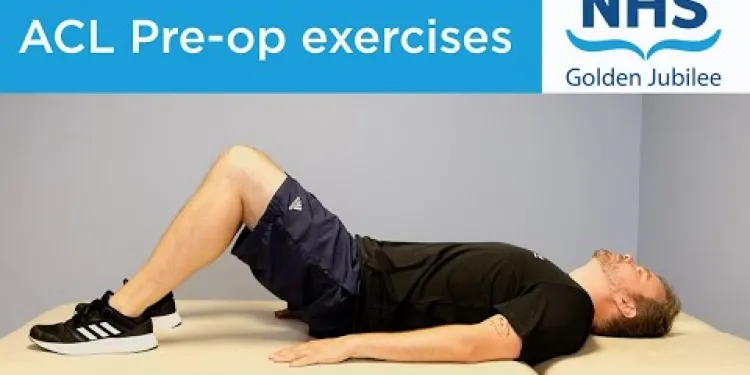
ACL pre-operation exercises
Relevance: 11%
-

Exercise in patients with a neuropathy
Relevance: 11%
-

Neck Care Exercises
Relevance: 11%
-

Can I do high-impact exercises while pregnant?
Relevance: 11%
-

What are the risks of having high blood pressure?
Relevance: 11%
-

Do I need to consult a doctor before exercising during pregnancy?
Relevance: 11%
-

Can weight loss help reduce high blood pressure?
Relevance: 11%
-
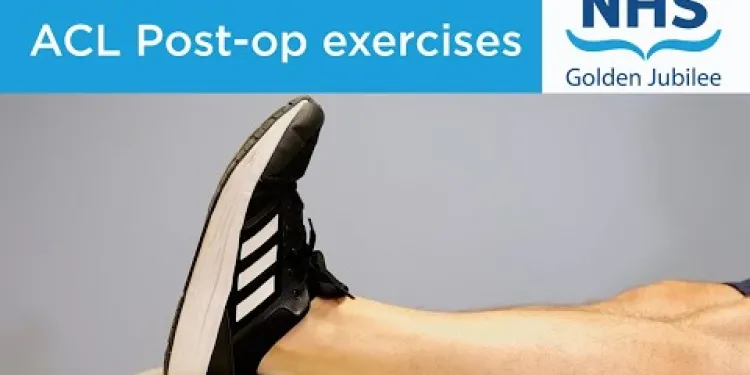
ACL exercises post-operation
Relevance: 11%
-
Are high caffeine drinks safe?
Relevance: 11%
-

What causes high blood pressure?
Relevance: 11%
-

Can exercises help with labor preparation?
Relevance: 10%
-

How do medications help control high blood pressure?
Relevance: 10%
-

Is it safe to exercise outside during a heatwave?
Relevance: 10%
Plantar Fascia Loading Exercise (High Load Exercise)
Introduction
Plantar Fascia Loading Exercise, often referred to as High Load Exercise, is a specialized form of physiotherapy designed to target and relieve plantar fasciitis. This condition, known for its painful inflammation, affects the plantar fascia—a thick band of tissue that runs across the bottom of the foot, connecting the heel bone to the toes. Recent studies have shown that strategic, high-load exercises can significantly alleviate the symptoms of plantar fasciitis, promoting healing and improving foot function, making it particularly relevant for readers in the United Kingdom where such conditions can impact daily mobility.How Does It Work?
High Load Exercise focuses on applying gradual, controlled stress to the plantar fascia to stimulate the remodeling of the tissue. This process involves performing weighted exercises like calf raises or controlled stretching exercises, which aim to strengthen the plantar fascia and the arch of the foot. Over time, this loading helps the tissue adapt and rebuild, reducing pain and promoting durability against everyday stresses.The Exercises
A typical high load regimen might include the following exercises: 1. **Calf Raises:** Stand on the edge of a step with just the balls of your feet. Slowly raise your heels as high as possible, then lower them below the step level. This exercise can be performed with extra weight, such as holding a dumbbell. 2. **Toe Towel Scrunches:** Sit in a chair with a towel under your feet. Use your toes to scrunch and pull the towel towards you. 3. **Static Stretching:** Stretch the plantar fascia by pulling the toes back towards the shin for a count of 15-30 seconds. Performing these exercises consistently, under the guidance of a healthcare professional, can ensure proper technique and effectiveness.Benefits of High Load Exercises
The primary benefit of high load exercises is the reduction of pain associated with plantar fasciitis. Beyond pain relief, these exercises also enhance the functional strength of the foot, potentially preventing future injuries. They are especially beneficial for runners and athletes who are at higher risk of repetitive strain injuries. In the UK, where the climate can sometimes be wet and cold, maintaining strong and flexible feet is crucial for overall mobility and comfort.Consulting a Professional
Before starting a high load exercise program, it's essential to consult with a physiotherapist or healthcare provider. They can offer personalized advice and ensure that the exercises are tailored to the individual's specific condition and fitness level. This is especially crucial for patients with chronic conditions or those who have experienced significant foot injury. In summary, Plantar Fascia Loading Exercise is a highly effective method to combat the discomfort of plantar fasciitis. By incorporating these structured exercises into a daily routine, individuals can experience substantial improvements in foot health and overall quality of life.Plantar Fascia Loading Exercise (High Load Exercise)
Introduction
Plantar Fascia Loading Exercise, also called High Load Exercise, helps with plantar fasciitis. This foot problem causes pain in the plantar fascia, a thick band under the foot. The band connects the heel to the toes. Pain can make it hard to walk. Exercises can help the pain and make the foot work better. This is important for people in the UK, where the weather can affect walking.How Does It Work?
High Load Exercise uses gentle pressure on the plantar fascia to help it get stronger. Doing special exercises, like lifting your heels (calf raises) or stretching, makes the foot stronger. Over time, these exercises help the foot hurt less and become stronger.The Exercises
Here are some exercises you might do: 1. **Calf Raises:** Stand with your toes on a step. Lift your heels up high, then lower them slowly. You can hold a weight to make it harder. 2. **Toe Towel Scrunches:** Sit down with a towel under your feet. Use your toes to grab and pull the towel. 3. **Static Stretching:** Pull your toes back towards you and hold for 15-30 seconds. Do these exercises often with help from a doctor or therapist to do them right.Benefits of High Load Exercises
High load exercises help reduce pain from plantar fasciitis. They make your feet stronger and can stop injuries. These exercises are good for runners and athletes. In the UK, strong feet help you move comfortably in wet and cold weather.Consulting a Professional
Talk to a doctor or therapist before starting these exercises. They can make a plan that is right for you, especially if you have other health issues or foot injuries. In summary, Plantar Fascia Loading Exercise can help with pain from plantar fasciitis. Doing these exercises every day can improve foot health and help you feel better overall.Frequently Asked Questions
What is a Plantar Fascia Loading Exercise?
A Plantar Fascia Loading Exercise, also known as High Load Exercise, is a specific type of strength training designed to reinforce the plantar fascia. The exercise involves controlled and progressive stretching and contraction to alleviate pain and promote healing.
Why is High Load Exercise recommended for plantar fasciitis?
High Load Exercise is recommended because it helps to strengthen the plantar fascia, improving its ability to absorb shock and reducing strain. This exercise method can effectively reduce pain and facilitate recovery.
How often should I do Plantar Fascia Loading Exercises?
It is typically recommended to perform these exercises every other day or three times a week. However, it’s crucial to follow a healthcare professional’s advice tailored to your specific condition.
What is a common High Load Exercise for plantar fasciitis?
A common High Load Exercise is the heel raise on a step or stair. This involves slowly raising and lowering the heels to strengthen the arch and the plantar fascia.
Is it normal to feel pain during High Load Exercises?
Mild discomfort can be normal, but if you experience significant pain, you should stop immediately and consult a healthcare professional. Proper technique and gradual progression are key to preventing injury.
Can I perform these exercises if my plantar fasciitis is severe?
It’s important to consult with a healthcare provider before starting any exercise regimen if your plantar fasciitis is severe. They may recommend modified exercises or a different treatment approach initially.
Do I need any special equipment to perform High Load Exercises?
Most High Load Exercises for plantar fasciitis can be performed with minimal equipment, such as a step or stairs. Some variations may require resistance bands or weights.
How soon can I expect results from doing these exercises?
Results can vary, but many people start to notice improvements within a few weeks of regular, consistent exercise. It may take several months for complete recovery, depending on the severity of the condition.
Can High Load Exercises prevent plantar fasciitis from recurring?
While High Load Exercises can strengthen the plantar fascia and reduce the risk of recurrence, maintaining good foot health, proper footwear, and overall fitness is also important in prevention.
Are Plantar Fascia Loading Exercises suitable for everyone?
Most people with plantar fasciitis can benefit from these exercises, but it’s best to get a personalised assessment from a healthcare professional to ensure they are appropriate for your specific situation.
Can I do High Load Exercises alongside other treatments?
Yes, High Load Exercises can be incorporated with other treatments such as physiotherapy, orthotics, or anti-inflammatory medications. Always consult your healthcare provider to tailor a comprehensive treatment plan.
Should I warm up before doing High Load Exercises?
Warming up before any exercise is advisable. Gentle stretching or a brief walk are good ways to prepare your muscles and ligaments for High Load Exercises.
Is it better to perform these exercises in the morning or evening?
There is no strict rule about the time of day. However, some people find it more comfortable to do these exercises later in the day when their muscles are more warmed up.
Can I walk or run after doing High Load Exercises?
It’s generally safe to walk after performing these exercises. However, it’s best to avoid high-impact activities like running until you have significantly improved or consult with your healthcare provider.
What should I do if my symptoms worsen after starting High Load Exercises?
If your symptoms worsen, stop the exercises immediately and consult with a healthcare professional. They can help adjust your exercise programme or explore other treatment options.
What is a Plantar Fascia Loading Exercise?
A "Plantar Fascia Loading Exercise" is a type of foot exercise. It helps make the bottom of your foot feel better. This part of your foot is called the plantar fascia.
These exercises can help if your foot hurts, especially in the morning. They make your foot stronger and less sore.
Here are some tools and tips to help you do them:
- Ask someone to show you how to do the exercise right.
- Use a timer to keep track of how long you do the exercise.
- You can use a soft ball to help with these exercises.
A Plantar Fascia Loading Exercise is a special exercise. It's also called High Load Exercise. This exercise helps make the bottom of your foot stronger. You do this by slowly stretching and squeezing the muscles in your foot. This helps stop pain and helps your foot get better.
Why is High Load Exercise good for plantar fasciitis?
High Load Exercise can help your feet feel better. If you have plantar fasciitis, your heel and foot might hurt a lot. Doing special exercises that are strong can make your foot stronger. This can help the pain go away faster.
Here are some tips to help when exercising:
- Stretch your foot gently before and after exercise.
- Go slow and be careful not to overdo it.
- Use soft shoes or put soft pads in your shoes.
If it still hurts, talk to a doctor or a foot specialist for help. They can show you the best exercises and ways to feel better.
Doing heavy exercises is good. It makes the bottom of your foot stronger. This helps your foot take in bumps without getting hurt. It stops your foot from hurting. It helps you get better faster.
How often should I do Foot Stretching Exercises?
It is good to do foot stretching exercises to help your feet feel better. Try doing them every day. You can ask someone to help you remember to do them.
Some exercises are like gentle foot stretches. You can sit down and pull your toes back gently, or you can roll your foot over a small ball. These help your feet.
If your feet hurt a lot, talk to a doctor or someone who knows about feet.
Try to do these exercises every other day or three times a week. But it's really important to listen to your doctor or therapist. They can tell you what is best for you.
What exercise can help with heel pain?
If your heel hurts because of plantar fasciitis, here is an exercise that might help. Try doing this: - Stand on your toes, lifting your heels up. - Hold it for a few seconds. - Slowly lower your heels back down. Do this exercise a few times every day. If you want extra help, you can: - Use a foam roller to massage your foot. - Stretch your foot gently. These can make your heel feel better.A good exercise to make your feet stronger is called the heel raise. You do this on a step or stair. You gently lift up and lower your heels to help make the arch and bottom of your foot stronger.
Is it normal to feel pain during hard exercises?
It is okay to feel some soreness when you do hard exercises. But, if you feel a sharp pain, stop and rest. Use tools like heat packs or ice to help. Ask a grown-up or a coach if you're unsure.
It is okay to feel a little bit uncomfortable. But if you feel a lot of pain, stop what you are doing right away. Talk to a doctor or nurse. It is important to do things the right way and take small steps to stay safe and not get hurt.
Can I do these exercises if my heel pain is bad?
Before you start any exercise if your heel pain (plantar fasciitis) is really bad, talk to a doctor first. They can help you see if you need to do different exercises or try another way to get better.
Do I need special gear to do Heavy Exercises?
You might need some tools for strong exercises. Things like weights or a strong mat can help.
If you lift heavy, a friend can help keep you safe. A good helper is important. Clothes that stretch and let you move also help.
Try using videos or guides. They show you how to do it right.
You can do most exercises for plantar fasciitis without much gear. You might need a step or some stairs. Sometimes, you might need stretchy bands or weights.
When will I see changes from doing these exercises?
You want to know how long it takes to see results from the exercises.
Everyone is different. Some people might see changes quickly. For others, it might take longer.
A good thing to do is keep practicing and to not give up.
It can help to use a calendar to mark the days you exercise. This way, you can see your progress over time.
If you have questions, you can ask a trainer or a coach for advice.
People can see changes in a few weeks if they exercise regularly. Getting all better can take longer, like a few months. This depends on how serious the problem is.
Can Doing Strong Exercises Stop Foot Pain from Coming Back?
Plantar fasciitis is when the bottom of your foot hurts. Can doing strong exercises help stop this pain from coming back?
Simple Exercises:
- Try doing easy foot stretches every day.
- These help make your foot strong.
Other Helpful Tips:
- Wear good shoes that support your feet.
- If it hurts, rest your foot.
Remember, it's important to ask a doctor or a foot expert if you have questions.
Doing exercises that are hard but safe can make your foot strong. This helps stop pain from coming back. It's also important to take care of your feet, wear good shoes, and stay fit.
Can everyone do Plantar Fascia Loading Exercises?
Plantar Fascia Loading Exercises help your feet.
But are these exercises good for everyone?
Some people might need to be careful. If your feet hurt a lot, talk to a doctor or a therapist. They can tell you if these exercises are okay for you.
You can also use tools like a chair or wall for support. These help keep you steady while you exercise.
Most people who have plantar fasciitis can feel better by doing these exercises. But it’s a good idea to see a healthcare professional. They can check to make sure the exercises are right for you.
Can I do Heavy Exercises with Other Treatments?
If you are getting treatment, you might wonder if you can still do heavy exercises. Talk to your doctor first. They can tell you if it is safe.
Here are some tips:
- Ask a Doctor: Always check with your doctor before starting exercises.
- Take it Slow: Start with easy exercises and slowly do more if your body feels okay.
- Listen to Your Body: If anything hurts, stop and rest.
Using simple exercise videos can help. You can also try asking a friend or family member to help you exercise.
Yes, you can use High Load Exercises with other treatments. These treatments can include physiotherapy, special shoe inserts (called orthotics), or medicine that helps with swelling and pain. Always talk to your doctor to create the best plan for you.
Do I need to warm up before lifting heavy weights?
It's good to get ready before you exercise. You can stretch gently or take a short walk. This helps your muscles and joints get ready for hard exercises.
Is it better to do these exercises in the morning or evening?
It means, should you do these exercises when you wake up, or before bed. It's okay to choose what feels best for you.
Morning: Doing exercises in the morning can make you feel awake and happy!
Evening: Doing exercises at night can help you relax and sleep better.
Try both and see what you like! You can use a friend or family member to help you decide. You can also use a timer or checklist to help remember when to exercise.
There is no strict rule about when to do these exercises. But some people like to do them later in the day. Their muscles are warmer then and it feels nicer.
Can I walk or run after lifting heavy things?
When you lift heavy things, it's a hard workout for your muscles. Some people might want to walk or run afterwards. If you want to do this, go slow and listen to your body. If you feel very tired, it's okay to rest. Remember, it's good to drink water.
Using a timer can help you take breaks. You can also ask someone to walk or run with you, which makes it fun and safe!
It's okay to go for a walk after doing these exercises. But try not to do activities that make you jump or run until you are much better. You can also ask your doctor what is best for you.
What to do if you feel worse after starting High Load Exercises?
If you feel more pain or your symptoms get worse after doing High Load Exercises, here are some things you can do:
- Stop the exercises and rest.
- Talk to a health expert, like a doctor or a therapist.
- Use ice packs on the painful area to help with swelling.
- Take deep breaths to help calm your body.
- Try gentle stretches that do not cause pain.
Remember, it's important to listen to how your body feels.
If you start feeling worse, stop doing the exercises right away. Talk to a doctor or nurse. They can help change your exercises or find other ways to make you feel better.
Useful Links
- Ergsy carfully checks the information in the videos we provide here.
- Videos shown by Youtube after a video has completed, have NOT been reviewed by ERGSY.
- To view, click the arrow in centre of video.
- Most of the videos you find here will have subtitles and/or closed captions available.
- You may need to turn these on, and choose your preferred language.
- Go to the video you'd like to watch.
- If closed captions (CC) are available, settings will be visible on the bottom right of the video player.
- To turn on Captions, click settings .
- To turn off Captions, click settings again.
More Items From Ergsy search
-

Plantar Fascia Loading Exercise (High Load Exercise)
Relevance: 100%
-

Plantar Fascia Intrinsic Theraband Strengthening Exercise
Relevance: 46%
-

Plantar Fascia Wall Stretch
Relevance: 45%
-

Plantar Fascia Cold Therapy
Relevance: 42%
-

Eccentric loading forearm extensors (for tennis elbow)
Relevance: 42%
-

What does an undetectable viral load mean?
Relevance: 38%
-

Plantar fasciitis
Relevance: 34%
-

Plantar fasciitis
Relevance: 34%
-

Is it safe for a partner of someone with HIV to have children?
Relevance: 17%
-

Heel pain | NHS
Relevance: 16%
-

Knee Care Exercises
Relevance: 13%
-

What is HIV?
Relevance: 13%
-

Can high blood pressure be prevented?
Relevance: 13%
-

What is antiretroviral therapy (ART)?
Relevance: 13%
-

What is the difference between HIV and AIDS?
Relevance: 12%
-

Shoulder Exercises 1
Relevance: 12%
-

Can exercise influence cortisol levels?
Relevance: 12%
-

How can high blood pressure be treated?
Relevance: 12%
-

Neck Exercises
Relevance: 12%
-

Neck Exercises
Relevance: 11%
-

What is high blood pressure?
Relevance: 11%
-

Are there any exercises to avoid during pregnancy?
Relevance: 11%
-

Exercise Routines for Busy Parents
Relevance: 11%
-

Should I adjust my exercise routine during a heatwave?
Relevance: 11%
-

Can exercise help prevent gestational diabetes?
Relevance: 11%
-

Is it safe to exercise with a cold?
Relevance: 11%
-

Facial exercise programme
Relevance: 11%
-

ACL pre-operation exercises
Relevance: 11%
-

Exercise in patients with a neuropathy
Relevance: 11%
-

Neck Care Exercises
Relevance: 11%
-

Can I do high-impact exercises while pregnant?
Relevance: 11%
-

What are the risks of having high blood pressure?
Relevance: 11%
-

Do I need to consult a doctor before exercising during pregnancy?
Relevance: 11%
-

Can weight loss help reduce high blood pressure?
Relevance: 11%
-

ACL exercises post-operation
Relevance: 11%
-
Are high caffeine drinks safe?
Relevance: 11%
-

What causes high blood pressure?
Relevance: 11%
-

Can exercises help with labor preparation?
Relevance: 10%
-

How do medications help control high blood pressure?
Relevance: 10%
-

Is it safe to exercise outside during a heatwave?
Relevance: 10%


